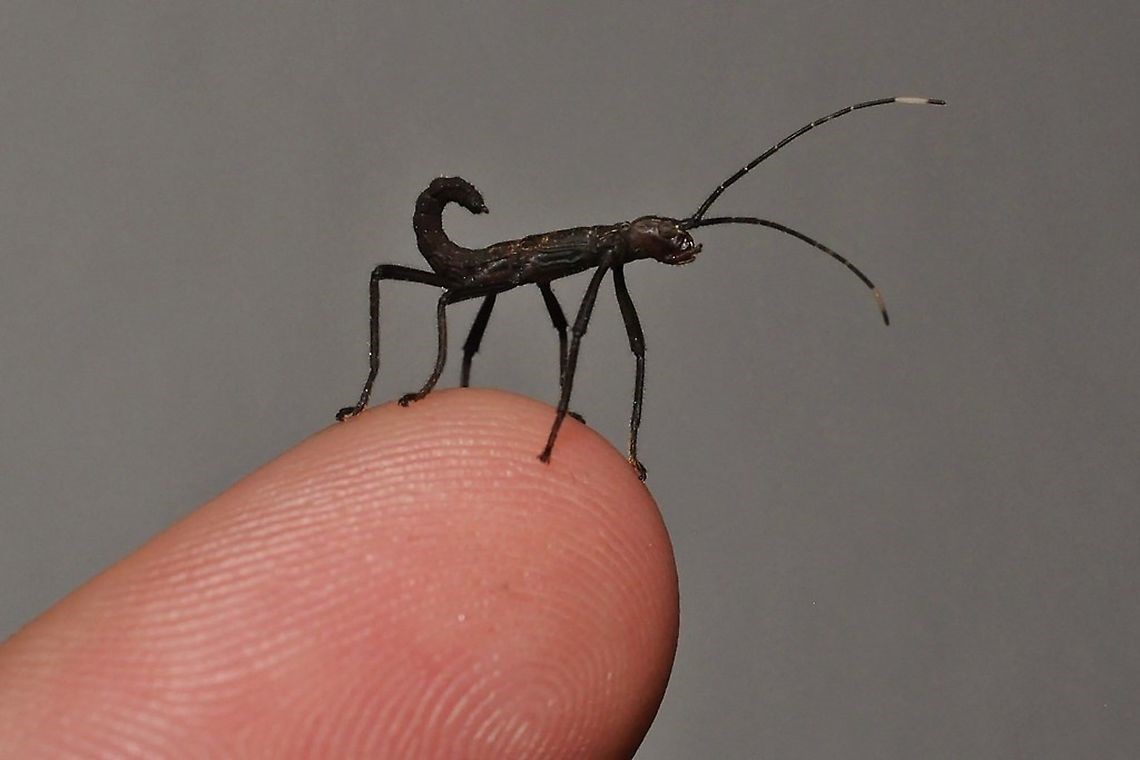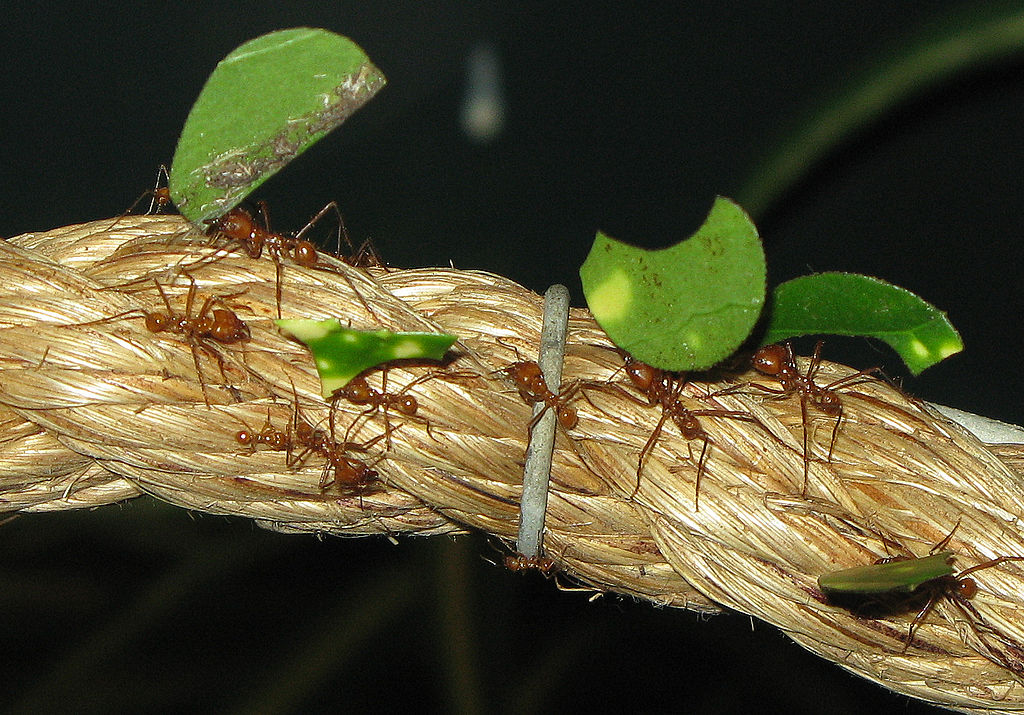In 2013 a unique aberration made its appearance at the Cockrell Butterfly Center. A Great Southern White (Ascia monuste) butterfly emerged from its chrysalis with a perfect bilateral split down the center of its body. One side of the butterfly was male, the other was female. Since the Great Southern White is a sexually dimorphic species, the division was quite dramatic.

Figure 1. Great Southern White (Ascia monuste) gynandromorph. Raised at the Cockrell Butterfly Center. Red arrow points out single clasper on male side. Credit: Lauren Williamson
This condition is known as bilateral gynandromorphy. Gynadromorphs are animals that have both genetically male and female tissues. It is thought that bilateral gynadromorphs arise very early in development, when the organism is made up of only a few cells. In February of 2018 we discovered another gynandromorph in our midst – this time in our Madagascar Hissing Cockroach (Gromphadorhina portentosa) colony. Madagascar Hissing Cockroaches vary in color from light tan to almost black with males being generally darker. What first drew our attention to this particular roach (within our colony of thousands!) was a demarcation running down the center of its back. Upon closer inspection we identified this individual as being a bilateral gynandromorph – the lighter colored side is female, while the darker side shows male features.

Figure 2. Madagascar Hissing Cockroach gynandromorph discovered at the Cockrell Butterfly Center. Credit: Jeff Cummins
Another observable difference between the male and female sides are the antennae. If you look closely you will notice that the male antenna is thicker and hairier than the female side. Male antennae are specialized to perceive female pheromones. The female antenna is smoother and thinner. Directly behind the head is the pronotum. One of the easiest ways to distinguish male and female Madagascar Hissing Cockroaches is the existence of pronounced turbercles, or horns, on the male pronotum. Females do not have the horns, instead just slight bumps. Our bilateral gynandromorph roach has a pronounced horn on the male side only. In general females have slightly fatter abdomens. Looking at this gynandromorph, you can see that the female side is bigger than the male side.

Figure 3. Madagascar Hissing Cockroach gynandromorph discovered at the Cockrell Butterfly Center. Photo depicting thicker male anntena. Credit: Jeff Cummins

Figure 4. Madagascar Hissing Cockroach gynandromorph discovered at the Cockrell Butterfly Center. Photo depicting horn on male pronotum. Credit: Jeff Cummins

Figure 5. Madagascar Hissing Cockroach gynandromorph discovered at Cockrell Butterfly Center. Photo showing slightly larger abdomen on female side. Credit: Jeff Cummins
Bilateral gynandromorphs have been observed in insects, arachnids, crustaceans, other arthropods, and even some birds, but they are extremely rare. The condition can be caused by several different mechanisms during very early development. For example, a non-disjunction event during the first cell division resulting in the two-celled embryo to be made up of one genetically female cell and one male cell. As development continues, the progeny of each of these cells will make up the right and left sides of the organism.

Figure 6. Kentish Glory Moth (Endromis versicolora) gynandromorph. Left side is female, right side is male. Credit:FLPA/Alamy Stock Photo

Figure 7. Catonephele numila gynandromorph. Left side is female, right side is male. Credit: Alex Bik

Figure 8. Zebra finch (Taeniopygia guttata) gynandromorph. Left side male, right side female. Credit: Arthur Arnold

Figure 9. Atlantic lobster (Homarus americanus) gynandromorph. Credit: Department of Fisheries and Oceans, Canada
Gynandromorphs do not occur in mammals or other higher order organisms because sex determination is much more complex and includes hormones which are diffuse within the entire body. Regardless of the cause, this rare condition is quite striking and always interesting to observe!







